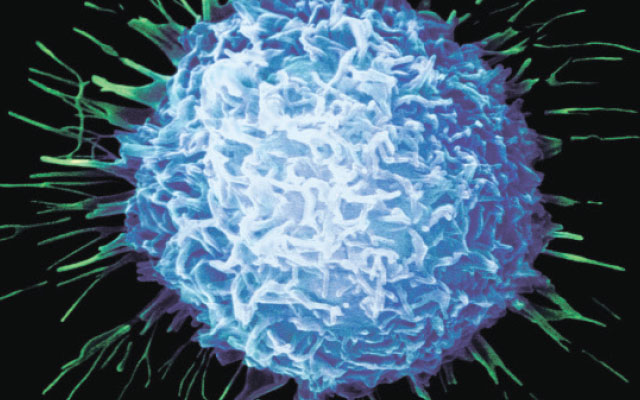
eBusiness Weekly

Dr Godfrey T. Chatora Specialist Radiologist
Breast cancer is the most common cancer in women worldwide and the second most common cancer in women in Zimbabwe following cervical cancer. According to the latest statistics from the Zimbabwe National Cancer Registry, 489 women and 81 men were diagnosed with breast cancer in 2015.
The incidence of breast cancer is increasing in Zimbabwe. A study done by Chokunonga et al from the National Cancer Registry in 2013 has shown a steady 4,9 percent annual increase in breast cancer rates during the 1991- 2010 period. This increase is thought to be due to increased urbanisation and adoption of Western lifestyles.
What is breast cancer?
Breast cancer results from the uncontrolled division of an abnormal cell whose DNA is damaged or changed forming a tumour within the breast.
Not all tumours within the breast are cancerous; tumours can be benign or malignant. Benign tumours are not cancerous and cannot spread to other parts of the body.
What causes breast cancer?
It is nearly impossible to prove what causes breast cancer in any individual but there are certain factors that are known to increase the likelihood of developing breast cancer which include:
Significant family history (a number of cases of breast and ovarian cancer in the family, and/or cases at a young age, and/or male relatives with breast cancer).
Known inherited mutation in one of the known breast cancer genes; BRCA1, BRCA2 or TP53.
Having previously had breast cancer.
Taking hormone replacement therapy (HRT) — the type you take and how long you take it for is relevant.
Taking the oral contraceptive pill for a number of years.
Being overweight especially after menopause.
Smoking or drinking more than 14 units of alcohol a week.
Exposure to very high levels of radiation or previously treated with chest radiotherapy for other cancers
What breast cancer is not caused by:
Wearing an underwire bra.
Storing money or a cellphone in a bra.
Wearing anti-perspirant.
Having small or large breasts.
Hair straighteners or relaxers.
Caffeine.
Having a needle biopsy
What are the signs and symptoms of breast cancer?
The most common symptom of breast cancer is a painless lump within the breast or armpit.
Other symptoms include:
a change in size or shape of the breast or nipple.
A change in skin texture such as puckering or dimpling.
Itchy, scaly sore or rash on the skin and/or around the nipple.
Pulling in of the nipple.
Nipple discharge that comes without squeezing, only occurs in one breast and is bloody or clear (not milky).
New pain in one spot in the breast or arm pit that does not go away.
While many of these symptoms may be caused by normal breast changes or a benign breast condition, a doctor should always be consulted.
Can men get breast cancer?
Men can get breast cancer but it is very rare as they have much smaller amounts of breast tissue compared to women. Signs and symptoms of male breast cancer are similar to those in women and when diagnosed it is treated in the same way.
Breast cancer screening
Screening aims to find breast cancer early before there are any signs or symptoms. Breast cancer that is found early when it is small and has not spread is easier to treat successfully.
Breast cancer screening is done through mammography which is a low dose X-ray examination of the breasts.
The American Cancer Society recommends annual mammography screening from the age of 40 years and to continue as long as a woman is in good health.
The National Comprehensive Cancer Network also recommends that every woman should have their breasts examined by a trained health professional every 1 to 3 years between the ages of 25 to 39 years and annually starting at the age of 40.
All women should also be familiar with how their breasts normally look and feel by checking their breasts regularly and any changes should be reported to their doctor right away.
How do I check my breasts?
Every woman should try to get used to looking at and feeling their breasts regularly which will make it easier to detect any changes. There is no special way to check the breasts but all areas including the armpits should be felt.
How is breast cancer diagnosed?
Breast cancer is diagnosed through a core needle biopsy (a hollow needle is used to take one or more samples of breast tissue from an area of concern). A biopsy is done when a mammogram or other imaging tests or physical examination shows changes that might be cancer.
The tissue is then sent to the laboratory where it is examined under a microscope by a specialist doctor called a pathologist to establish whether the changes are due to breast cancer or not.
How is breast cancer treated?
Treatment of breast cancer includes some combination of:
Surgery (removal of the tumour / entire breast and lymph nodes in the armpit).
Radiation therapy (use of targeted high energy X-rays to kill cancer cells).
Chemotherapy (drugs that kill cancer cells).
Hormone therapy (drugs that slow or stop the growth of hormone receptor positive cancers).
Targeted therapy (drugs that attack certain molecular pathways involved in the development of cancer)
Treatment plans vary from woman to woman based on the specifics of the breast cancer, the stage of the breast cancer, the overall health and age of the woman and the woman’s personal preferences.
Take home message
Finding breast cancer early through mammography screening and getting prompt appropriate treatment is the best strategy to prevent death from breast cancer.



